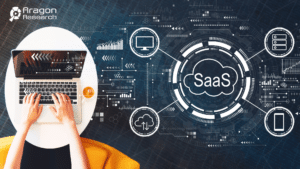
SaaS has revolutionized the way we access and use software applications, enabling greater flexibility, scalability, and cost-effectiveness. However, despite its widespread adoption, many people still have questions and uncertainties about SaaS. In this blog, we aim to shed light on some of the frequently asked questions about SaaS.
1. What is Software as a Service (SaaS)?
SaaS stands for Software as a Service. It is a cloud-based software delivery model where applications are hosted and maintained by a service provider and made accessible to users over the internet. Unlike traditional software that requires installation on individual devices, SaaS allows users to access the application from any device with an internet connection.
2. How does Software as a Service differ from traditional software?
Traditional software is typically installed and run locally on individual devices or servers, requiring regular updates and maintenance. In contrast, SaaS applications are centrally hosted and managed by the provider, eliminating the need for users to handle updates, backups, and security measures. This shift to cloud-based deployment brings added convenience and cost savings.
3. What are the benefits of using SaaS?
- Cost-Effectiveness: Software as a Service eliminates the need for upfront hardware and software investments. Users pay a subscription fee, making it more affordable for businesses of all sizes.
- Scalability: SaaS applications can easily accommodate fluctuating user demands, allowing businesses to scale their usage as needed without incurring additional infrastructure costs.
- Accessibility and Collaboration: As long as there’s internet access, users can access SaaS applications from anywhere, promoting remote work and collaboration among teams.
- Automatic Updates and Maintenance: SaaS providers handle updates, security patches, and maintenance, freeing users from these tasks and ensuring they always have access to the latest features.
- Integration and Compatibility: SaaS applications are often designed to integrate seamlessly with other cloud-based tools and services, enhancing productivity and workflow efficiency.
4. Is Software as a Service secure?
Security is a top priority for Software as a Service providers. Reputable Software as a Service companies invest heavily in state-of-the-art security measures, including data encryption, access controls, and regular security audits. However, it is essential for users to research and select reputable providers and take additional measures to protect their data, such as using strong passwords and implementing multi-factor authentication.
5. Can SaaS applications be customized for specific needs?
While Software as a Service applications are generally designed to be flexible and customizable to some extent, they might not cater to highly specific or unique business requirements. Some SaaS providers offer options for limited customization, while others provide APIs (Application Programming Interfaces) that allow businesses to integrate the software with their existing systems and customize certain aspects.
6. How is data handled in SaaS applications?
Data in Software as a Service applications is stored in the provider’s data centers or on cloud platforms. SaaS providers are responsible for data backups, redundancy, and disaster recovery. Users must understand the data handling practices of their chosen provider, including data retention policies and data ownership rights.
7. Can SaaS applications be used offline?
Software as a Service applications generally require an internet connection for real-time access. However, some Software as a Service providers offer offline capabilities that allow users to work offline and sync data when an internet connection is available.
8. How do I choose the right SaaS provider for my business?
Choosing the right Software as a Service provider requires careful consideration. Factors to consider include:
- Features and Functionality: Ensure the software meets your specific business needs and offers the essential features you require.
- Security: Verify the provider’s security protocols and compliance with industry standards.
- Performance and Reliability: Check for uptime guarantees and reviews from existing customers regarding performance and reliability.
- Scalability and Flexibility: Assess whether the application can grow with your business and adapt to changing needs.
- Support and Customer Service: Look for responsive customer support and resources available for troubleshooting.
Bottom Line
Software as a Service has transformed the software landscape, offering unparalleled convenience and benefits to businesses and individuals. As you consider adopting Software as a Service applications, remember to research and choose reputable providers, assess your unique business needs, and embrace the flexibility and accessibility that Software as a Service offers.
With the right approach, SaaS can empower your business and enhance productivity in the digital era.
What Does Cybersecurity Look Like in the Age of AI?
Join Aragon Sr. Director of Research, Craig Kennedy LIVE on August 17th at 10 PM PT
Cybersecurity in the Age of AI: Fighting Fire with Fire
Cybercriminals are aggressively weaponizing artificial intelligence (AI) to launch increasingly effective cyberattacks against organizations. These cybercriminals are using AI to launch sophisticated and stealthy cyberattacks, such as creating realistic deep fakes, generating malware that can evade detection systems, creating convincing phishing emails, or identifying and exploiting vulnerabilities in real-time.
In this webinar, you will learn how AI can help you fight fire with fire to combat and survive these AI-powered cybersecurity attacks.
Some key areas we’ll cover:
- How cybercriminals are changing the game with AI?
- What solutions are available to combat these threats?
- How emerging AI technologies will transform cybersecurity?